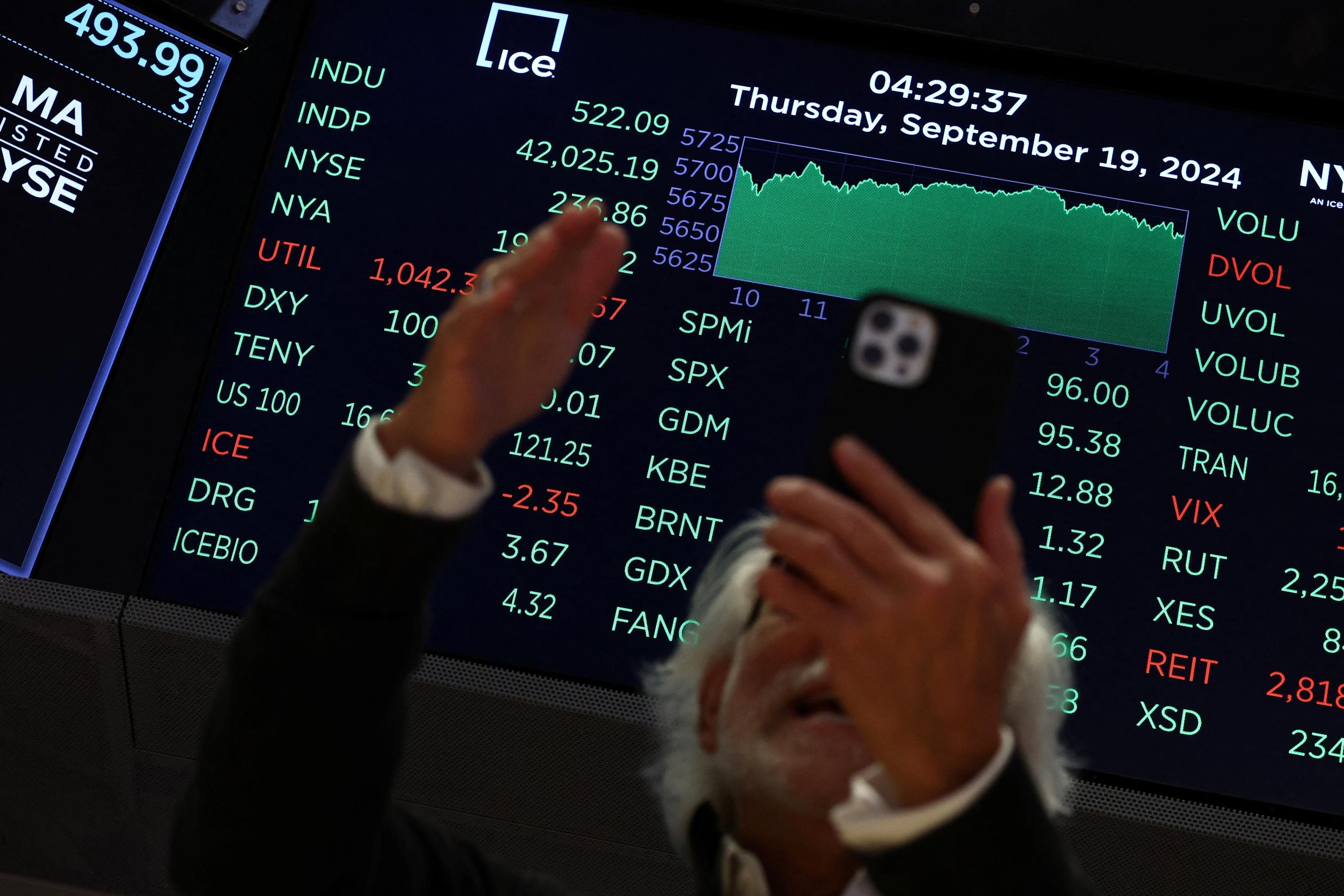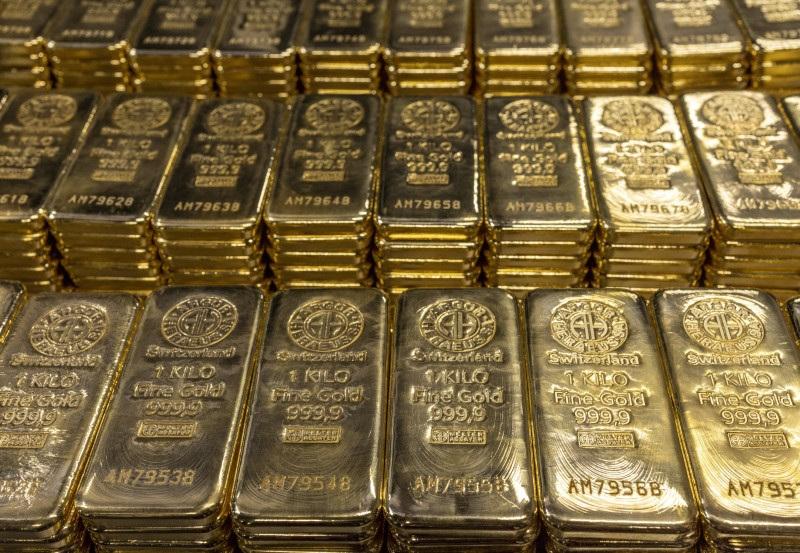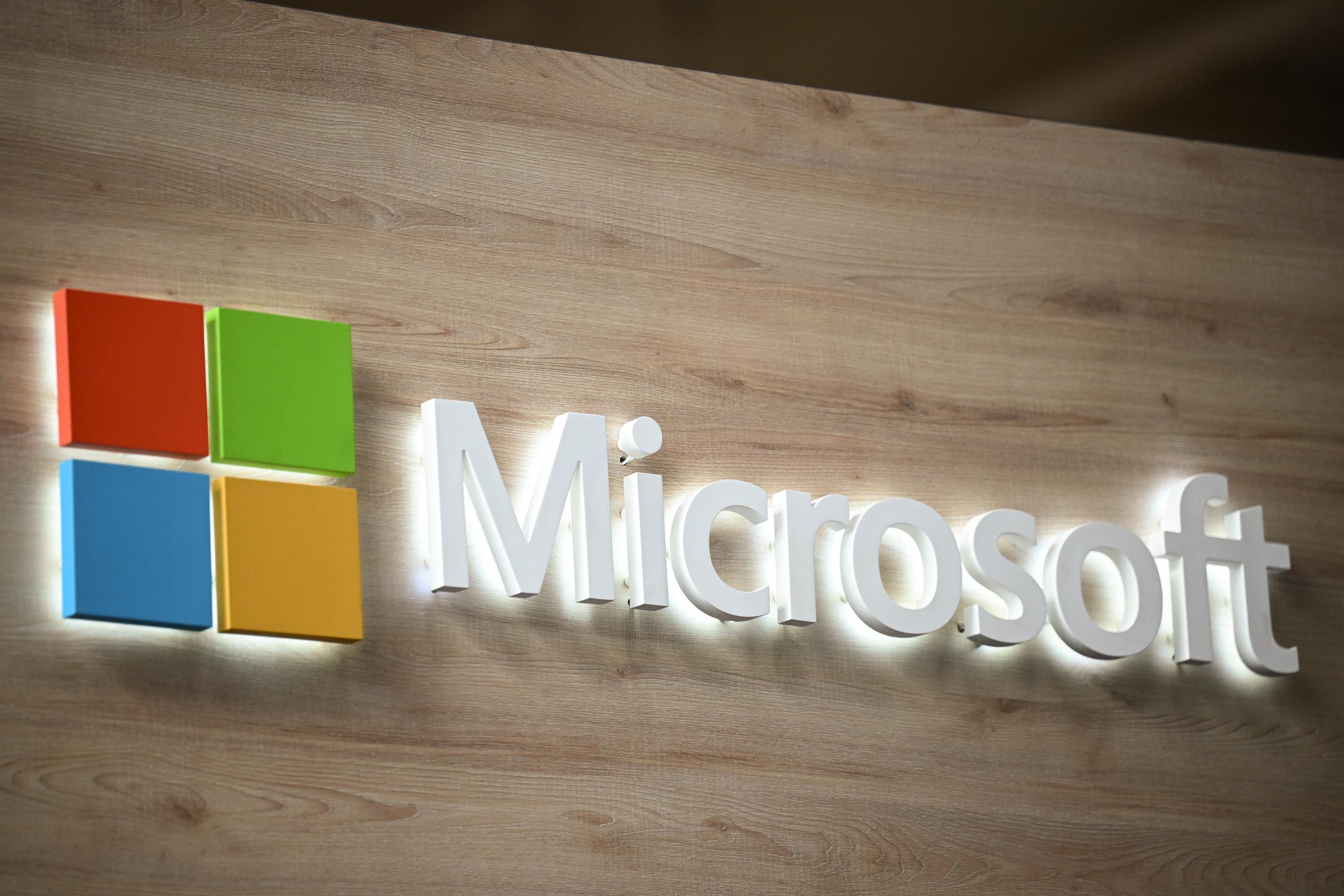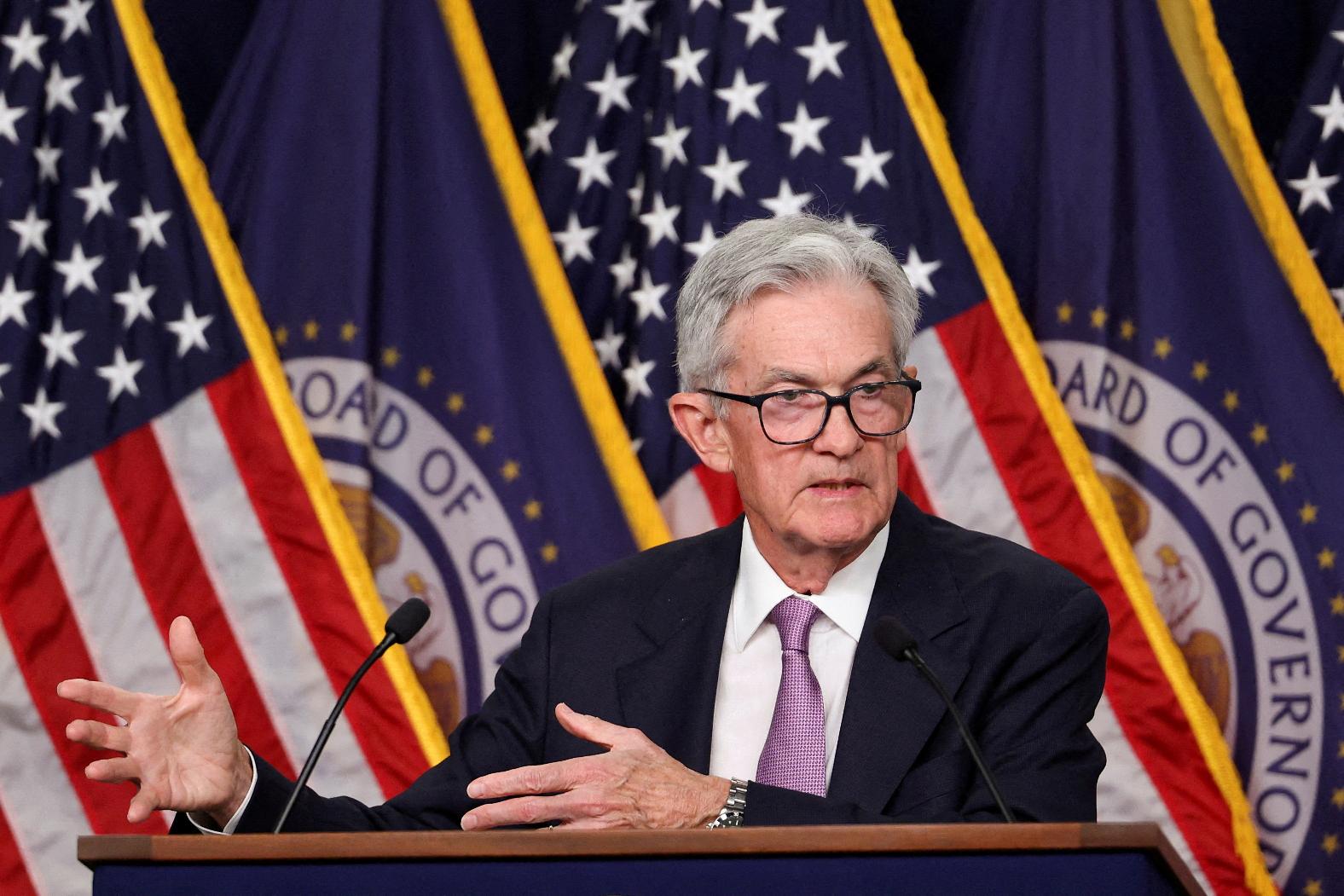
2024-09-20 14:57
NEW DELHI/DHAKA, Sept 20 (Reuters) - Bangladesh's efforts to clear debts of more than $1 billion owed to Indian power companies are being hampered by its inability to access the dollars it requires to pay them, documents showed and sources familiar with the matter said. The country has been struggling to pay its bills due to costly fuel and goods imports since the 2022 war in Ukraine, while political turmoil which led to the ouster of Prime Minister Sheikh Hasina in August has added to its troubles. Bangladesh is urgently seeking $5 billion in financial aid from international lenders to stabilise its dwindling foreign exchange reserves and its central bank has raised key interest rates to tame soaring inflation. Last year, it sought a $4.7 billion bailout from the International Monetary Fund. "Efforts are on to clear the outstanding payments, but the current dollar crisis is complicating the process significantly," an official at the Bangladesh Power Development Board (BPDB) told Reuters on Friday. Of the more than $1 billion owed to India's power companies, some $800 million is to Adani Power (ADAN.NS) , opens new tab, he added. Adani Power did not respond to a request for comment. PTC India (PTCI.NS) , opens new tab and SEIL Energy India Ltd have written to the BPDB to recover about $80 million and $190 million respectively in payment for power they provided to Bangladesh, documents reviewed by Reuters show. "PTC has a long term business relation of supplying power to BPDB since 2013 and the power supply under (the) current contract is from 2022," a PTC India spokesperson said. A SEIL spokesperson said it had informed the Bangladesh authorities about what it called an "unsustainable situation". Bangladesh, which imports nearly 20% of its power from its neighbour India, has not paid for the electricity for the last eight to nine months, a source told Reuters. SEIL received a contract in 2018 from BPDB to supply power to Bangladesh over a total period of 15 years. "While we continue to supply power to Bangladesh, we remain hopeful the concerned authorities will uphold the contractual terms and expedite the clearing of the dues, so that power supply can be sustained," SEIL said in a statement. SEIL and PTC India have bank guarantees relating to their power contracts with Bangladesh for $34.1 mln and $30.7 million, respectively, the documents show. This has left Bangladesh's Rupali Bank trying to access dollars to settle payment of about $270 million, as otherwise the Indian companies plan to cash the guarantees. Rupali Bank and BPDB are working "together for the necessary U.S. dollar resources from (the) Bangladesh Central Bank for the purpose of paying bills in foreign currency, which will continue in the future," the documents show. PTC India declined to comment on the specifics of terms and conditions of the contract, while calls to Rupali Bank went unanswered due to a weekend holiday in Bangladesh. Sign up here. https://www.reuters.com/world/asia-pacific/bangladesh-struggling-muster-dollars-pay-indian-power-debts-sources-say-2024-09-20/

2024-09-20 14:31
Investors cheered first rate cuts in over four years, boosting S&P 500 to new records High stock valuations may limit further gains despite lower rates Future stock market drivers include earnings and economic growth NEW YORK, Sept 20 (Reuters) - As the Federal Reserve kicks off a long-awaited rate cutting cycle, some investors are wary that richly valued U.S. stocks may have already priced in the benefits of easier monetary policy, making it harder for markets to rise much further. Investors on Thursday cheered the first rate cuts in more than four years, sending the S&P 500 (.SPX) , opens new tab to fresh records a day after the Fed reduced borrowing costs by a hefty 50 basis points to shore up the economy. History supports such bullishness, especially if the Fed’s assurances of a still-healthy U.S. economy pan out. The S&P 500 has gained an average of 18% a year following the first rate cut in an easing cycle as long as the economy avoids recession, according to Evercore ISI data since 1970. But stock valuations have climbed in recent months, as investors anticipating Fed cuts piled in to equities and other assets seen as benefiting from looser monetary policy. That has left the S&P 500 trading at over 21 times forward earnings, well above its long-term average of 15.7 times. The index has climbed 20% this year, even as U.S. employment growth has been weaker than expected in recent months. As a result, the near-term "upside from just lower rates is somewhat limited," said Robert Pavlik, senior portfolio manager at Dakota Wealth Management. "People just get a little bit nervous around being up 20% in an environment where the economy has cooled." Other valuation measures, including price-to-book value and price-to-sales, also show stocks are well above their historic averages, Societe Generale analysts said in a note. U.S. equities are trading at five times their book value, for instance, compared with a long-term average of 2.6. "The current levels can be summarized in one word: expensive," SocGen said. Lower rates stand to help stocks in several ways. Reduced borrowing costs are expected to increase economic activity, which can strengthen corporate earnings. A drop in rates also reduces yields on cash and fixed income, diminishing them as investment competition to equities. The yield on the benchmark 10-year Treasury has dropped about a full percentage point since April, to 3.7%, although it has ticked up this week. Lower rates also mean future corporate cash flows are more attractive, which often boosts valuations. But the P/E ratio for the S&P 500 has already rebounded substantially after falling as low as 15.3 in late 2022 and 17.3 in late 2023, according to LSEG Datastream. "Equity valuations were pretty reasonably full going into this," said Matthew Miskin, co-chief investment strategist at John Hancock Investment Management. "It's going to be hard to replicate the multiple expansion you just got over the last year or two over the next couple of years." Valuations in the technology sector have also overshot their long-term averages, thanks to massive rallies in stocks such as Nvidia (NVDA.O) , opens new tab, which is up around 140% this year. The tech sector trades at about 28 times earnings, compared to a long-term average of 21, according to LSEG Datastream. With any further increases in valuation expected to be limited, Miskin and others said earnings and economic growth will be key stock market drivers. S&P 500 earnings are expected to rise 10.1% in 2024 and another 15% next year, according to LSEG IBES, with third-quarter earnings season starting next month set to test valuations. At the same time, there are signs that the promise of lower rates may have already drawn investors. While the S&P 500 has tended to be flat in the 12 months leading up to rate-cutting cycles, it is up nearly 27% in that period this time around, according to Jim Reid, Deutsche Bank's global head of macro and thematic research, who studied data since 1957. "You could argue that some of a potential 'no recession easing cycle' gains have been borrowed from the future this time," Reid said in the note. To be sure, plenty of investors are undeterred by the elevated valuations and maintain a positive outlook for stocks. Valuations tend to be an unwieldy tool in determining when to buy and sell stocks - especially since momentum can keep markets rising or falling for months before they revert to their historical averages. The forward P/E ratio for the S&P 500 was above 22 times for much of 2020 and 2021 and reached 25 during the dotcom bubble in 1999. Meanwhile, rate cuts near market highs tend to bode well for stocks a year later. The Fed has cut rates 20 times since 1980 when the S&P 500 was within 2% of an all-time high, according to Ryan Detrick, chief market strategist at Carson Group. The index has been higher a year later every time, with an average gain of 13.9%, Detrick said. "Historically, equity markets have performed well in periods when the Fed was cutting rates while the US economy was not in recession," UBS Global Wealth Management analysts said in a note. "We expect this time to be no exception." Sign up here. https://www.reuters.com/markets/us/rate-cuts-are-here-us-stocks-may-have-already-priced-them-2024-09-20/

2024-09-20 13:20
Sept 20 (Reuters) - Canadian retail sales grew by 0.9% in July from June at C$66.38 billion ($48.95 billion), led by higher sales at motor vehicle and parts dealers, Statistics Canada said on Friday. Sales were likely up 0.5% in August, the agency said in a flash estimate. In July, sales were up in seven of nine subsectors, representing 84.6% of retail trade. In volume terms, retail sales increased 1.0%. (Percent changes) Jul Jul Jun(rev) Jun(prev) mo/mo yr/yr mo/mo mo/mo Total +0.9 +0.9 -0.2 -0.3 Excluding autos/parts +0.4 +0.8 +0.3 +0.3 NOTE: All figures are seasonally adjusted. ($1=$1.3561 Canadian) Keywords: CANADA ECONOMY/RETAIL Sign up here. https://www.reuters.com/markets/canada-july-retail-sales-up-09-autos-seen-up-05-august-2024-09-20/

2024-09-20 12:38
Sept 20 (Reuters) - Gold hit a record high above $2,600 per ounce on Friday, as the prospect of more U.S. interest rate cuts and global geo-political uncertainty boosted its appeal. Bullion has risen more than 26% so far this year, and as market bulls lock in further gains, another milestone of $3,000 per ounce is in focus. Here are the different avenues for investing in gold: SPOT MARKET Large buyers and institutional investors usually buy gold from big banks. Prices in the spot market are determined by real-time supply and demand dynamics. London is the most influential hub for the spot gold market, largely because of the London Bullion Market Association (LBMA). The LBMA sets standards for gold trading and provides a framework for the OTC (over-the-counter) market, facilitating trades among banks, dealers, and institutions. China, India, the Middle East and the United States are other major gold trading centres. FUTURES MARKET Investors can also get exposure to gold via futures exchanges, where people buy or sell a particular commodity at a fixed price on a particular date in future. COMEX (Commodity Exchange Inc), a part of the New York Mercantile Exchange (NYMEX), is the largest gold futures market in terms of trading volumes. Shanghai Futures Exchange, China's leading commodities exchange, also offers gold futures contracts. The Tokyo Commodity exchange, popularly known as TOCOM, is another big player in the Asian gold market. EXCHANGE TRADED PRODUCTS Exchange Traded Products (ETPs) or Exchange Traded Funds (ETFs) issue securities backed by physical metal and allow people to gain exposure to the underlying gold prices without taking delivery of the metal itself. ETFs have become a major category of investment demand for the precious metal. Global physically backed gold ETFs attracted a fourth consecutive month of inflows in August after North American and Europe-listed funds increased holdings, the World Gold Council (WGC) said. BARS AND COINS Retail consumers can buy gold from metals traders selling bars and coins in an outlet or online. Both gold bars and coins are effective means of investing in physical gold. DRIVERS: INVESTORS AND MARKET SENTIMENT Rising interest from investment funds in recent years has been a major factor behind bullion's price moves. Sentiment driven by market trends, news, and global events can also lead to speculative buying or selling of gold. FOREIGN EXCHANGE RATES Gold is a popular hedge against currency market volatility. It has traditionally moved in the opposite direction to the U.S. dollar as weakness in the U.S. unit makes dollar-priced gold cheaper for holders of other currencies and vice versa. MONETARY POLICIES AND POLITICAL TENSIONS The precious metal is widely considered a "safe haven", bought during uncertain times in a flight to quality. Major geopolitical events, such as extended conflicts in the Middle East and Europe have added to uncertainties for global investors and burnished gold's appeal. Policy decisions from global central banks also influence gold's trajectory. Lower rates reduce the opportunity cost of holding gold, since it pays no interest. Gold's latest rally was triggered after the U.S. Federal Reserve began its easing cycle with an outsized half-percentage-point cut on Wednesday. CENTRAL BANK GOLD RESERVES Central banks hold gold as part of their reserves. Buying or selling of the metal by the banks can influence prices. Central bank demand has been robust in recent years because of ongoing macroeconomic and political uncertainty, analysts have said. More central banks plan to add to their gold reserves within a year despite high prices for the precious metal, the World Gold Council (WGC) said in its annual survey in June. Sign up here. https://www.reuters.com/markets/commodities/how-investors-buy-gold-what-drives-market-2024-09-20/

2024-09-20 12:23
Sept 20 (Reuters) - Constellation Energy (CEG.O) , opens new tab and Microsoft (MSFT.O) , opens new tab have signed a power deal to help resurrect a unit of the Three Mile Island nuclear plant in Pennsylvania in what would be the first-ever restart of its kind, the companies said on Friday. Key regulatory permits for the plant's new life, however, haven't been filed, regulators say. Big tech has led to a sudden surge in U.S. electricity demand for data centers needed to expand technologies like artificial intelligence and cloud computing. Nuclear energy, which is nearly carbon-free and broadly considered more reliable than energy sources like solar and wind, has become a popular option for technology companies with uninterrupted power needs and climate pledges. "Nuclear plants are the only energy sources that can consistently deliver on that promise," Constellation Chief Executive Officer Joe Dominguez said in a statement. Constellation's shares were up more than 20% by early afternoon to $251.42 and have risen more than 100% so far this year. Power from the plant would be used to offset Microsoft's data center electricity use, the companies said. A relaunch of Three Mile Island, which had a separate unit suffer a partial-meltdown in 1979 in one of the biggest industrial accidents in the country's history, still requires federal, state and local approvals. Constellation has yet to file an application with federal nuclear regulators to restart the plant. "It’s up to Constellation to lay out its rationale for justifying restart, so we’re prepared to engage with the company on next steps," said Nuclear Regulatory Commission (NRC) spokesperson Scott Burnell. Constellation said it expected the NRC review process to be completed in 2027. BILLION DOLLAR BET The deal would help enable a revival of Unit 1 of the five-decades-old facility in Pennsylvania that was retired in 2019 due to economic reasons. Unit 2, which had the meltdown, will not be restarted. Constellation plans to spend about $1.6 billion to revive the plant, which it expects to come online by 2028. Reuters first reported on the potential restart in July. Sources told Reuters at the time that Constellation hoped it would receive federal support for Three Mile Island that was similar to what was given to the Palisades Nuclear Generating Station, which received a $1.5 billion conditional loan for a relaunch from the Biden administration. Under the Constellation-Microsoft deal, Microsoft will purchase energy from the restarted plant for a period of 20 years. The Three Mile Island unit will provide 835 megawatts of electricity, or enough to power about 700,000 homes. A restart is expected to be challenging, but as power demand spikes, the virtually carbon-free electricity source is seeing renewed support from tech companies. "This agreement is a major milestone in Microsoft's efforts to help decarbonize the grid in support of our commitment to become carbon negative," Bobby Hollis, vice president of energy at Microsoft, said in a statement. Microsoft has also signed a power purchase agreement with Washington-state fusion company Helion, which says the plant will be online by 2028, far earlier than many scientists say fusion will become commercial. Major tech executives, including ChatGPT developer OpenAI CEO Sam Altman and Microsoft co-founder Bill Gates, have touted nuclear energy as a solution to the growing power needs of data centers. Altman has backed and is the chairman of nuclear power startup Oklo (OKLO.N) , opens new tab, which went public through a blank-check merger in May, while TerraPower - a startup Gates co-founded - broke ground on a nuclear facility in June. Nuclear plants generated about 18.6% of the total electricity in the U.S. last year, according to Energy Information Administration data. The power supply deals with A.I. data centers are also facing increased scrutiny. A similar deal between Talen Energy (TLN.O) , opens new tab and Amazon (AMZN.O) , opens new tab signed earlier this year has been challenged by a group of electric utilities alleging it could spike costs for customers or hamper grid reliability. Financial details of the Microsoft-Constellation deal were not disclosed. The companies declined to give more details on the agreement. Sign up here. https://www.reuters.com/markets/deals/constellation-inks-power-supply-deal-with-microsoft-2024-09-20/

2024-09-20 12:21
BENGALURU, Sept 20 (Reuters) - The U.S. Federal Reserve will cut the federal funds rate by 25 basis points in both November and December, according to a strong majority of over 100 economists in a snap Reuters poll. The central bank started cutting rates on Wednesday with a larger-than-usual half-percentage-point reduction, which Fed Chair Jerome Powell said showed commitment to keeping unemployment low as inflation eased back toward the 2% target. This week's half point cut was mostly expected by market pricing, but was forecast by only 9 of 101 economists surveyed before the decision. Some of those economists have challenged the clarity of the Fed's pre-meeting communication given the economy is performing strongly and gradually rising unemployment is still relatively low at just 4.2%. The latest survey suggests the central bank will get very close to the neutral rate of interest, which neither restrains nor stimulates the economy, by this time next year. Over three quarters of economists, 86 of 107, saw rates falling by another 50 basis points this year to a 4.25%-4.50% range, in quarter-percentage-point reductions at the November and December meetings. That was shallower than a cumulative 75 basis points more priced in by markets, but is in line with the median from the Federal Open Market Committee's own dot-plot projections. Sixteen economists predicted the Fed will cut 75 basis points more this year, while five said just 25. The Fed will deliver 50 basis points of cuts in the first quarter of 2025 followed by 25 in the following two, poll medians showed, inferring a total of 100 basis points of reductions next year, to a 3.25%-3.50% range. David Mericle, chief U.S. economist at Goldman Sachs, sees that rate being reached slightly sooner. "The greater urgency suggested by...(the) 50bp cut and the acceleration in the pace of cuts that most (policymakers) projected for 2025 makes a longer series of consecutive cuts the most likely path," Mericle wrote in a research note. "We have therefore revised our Fed forecast to accelerate the pace of cuts next year and now expect a longer string of consecutive 25bp cuts from November 2024 through June 2025, when the funds rate would reach our terminal rate forecast of 3.25%-3.50%." The Fed's long-run assessment of the "neutral" rate is 2.9%, which would not be reached until 2026, according to the dot-plot projections. "We remain of the opinion that the main risk to our view is around Fed leadership finding the need to go back to its neutral stance much sooner than they currently anticipate, as both sides of the mandate are already back to or within reach of their steady state," said Oscar Munoz at TD Securities. The Fed's new economic projections showed the unemployment rate, at 4.2% in August, ending this year at 4.4% and remaining there through 2025. "Unless the unemployment rate goes above 4.4%...they would be more inclined to step down to 25 basis point cuts. So, it does set a fairly high bar for them to do further aggressive cuts," said Jonathan Millar, senior U.S. economist at Barclays. Asked to rate the Fed's communication over the past few months, economists were nearly split. Although 23 respondents said the communication was clear, 21 said it was not. (Other stories from the Reuters global economic poll) Sign up here. https://www.reuters.com/markets/us/fed-cut-rates-by-25bps-nov-dec-approach-neutral-level-sooner-2024-09-20/
